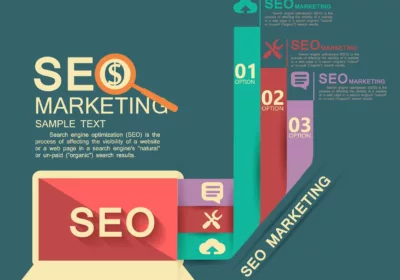
How to Create Customer Success Plans that Deliver Predictable Value?
Only a plan that is completely secure with its stellar strategy can deliver a predictable value. The goal of a well-defined customer success plan is that it has the capability to drive the upsell rate, renewal rate and take the sales rate a notch up, thereby leading to predictable value. Moreover, it is no surprise that the Customer Success thought leaders realize the need to deploy a prescriptive approach that streamlines scalability and predictability.
That is why creating a Customer Success plan is the need of the hour. Not only, is it a critical piece of your organization but also it allows you to chart out the results of a client’s expectations with your products. Also, this plan entails the several nitty-gritty of the customer-facing teams to help center communications around the anticipations of a customer. Here in this blog, we will walk you through what does it take for a customer success plan to deliver predictable value and how to design one. Let us begin with these five steps. Before that, let us brush up on some basics and know what a customer success plan is?
What is a Customer Success Plan?
Simply put, a customer success plan is nothing but a strategy that lays out the real steps and procedures for giving the customer stellar success and how you will help your customers find that in no time. This plan is basically a roadmap that the customer success teams use to function and operate. The better it is streamlined, the easier it becomes to put up and work through it.
Also, a customer success plan makes sure that the right resources are being subjected as well as delivered to your customers so that they receive the maximum value from using your product. This can also be seen as a concise document in which all that makes your customer the best in the market is outlined. For this, the customer habits, needs, demands, and objectives are studied, analyzed, and taken into consideration. Now let us delve into the steps for this.
- Chalk out a Strategy Session
- Come up with a Success Plan / Roadmap / Account Plan
- Imbibe the Best Practices
- Trace Your Growth
- Discuss and Operationalize your Plan
#1 Step: Chalk out a Strategy Session
Well, if you need to identify the challenges and pain points of a customer, you must conduct a session that focuses just on solutions that cater to these issues. In this session, you can invite any number of customers of your choice and hand them a slide with the most challenging issues according to them. All they need to do is mark the ones that they resemble. To top this, you may also call upon a heading thought leader or executive in this niche, to ensure that you are following the right strategic direction. Hurl through the different customer lifecycle stages and discuss your best risk management processes in this phase.
#2 Step: Come up with a Success Plan / Roadmap / Account Plan
Now that you know what your customers want, it is time to jolt it down on a roadmap – this in technical terms is called a success plan. As a succession of this plan, capture the pivotal pain points of the customers and roll out the best strategies that can work out for each of these points. Once you do that, make sure that you share this customer success plan with your clients.
This will say you more about whether your objectives are aligning with what they want and expect from you. It is of high pertinence that you and your customers are on the same page. A slight mismatch in this step can be detrimental to your business and can give them a backseat to continue their journey with you. Hence, this step is said to be one of the most important steps of all. Now, let us go on to the next vital step in the process.
#3 Step: Imbibe the Best Practices
For your current clients, see that they are empowered with an administrator from your company to evolve and grow. This should be taking place right after onboarding. It is your responsibility to let the customers imbibe the best practices according to the vital business decisions that you documented earlier in Step 1.
Aside from this, for the customers who demand extra help in imbibing these practices, you can help them out by offering them webinars, or short sessions, success blocks that would have been specially crafted from a professional administrator. Remember a customer success plan will never be implemented right until and unless your customers are not deriving essence and configuring the best practices from it.
#4 Step: Trace Your Growth
It all goes in vain if you do not track your progress so far. See if your resolutions that you had planned earlier have worked out well with what the customer started with as pain points and challenges. It is highly important to know your performance and realize whether they are being good, bad, or ugly. And most importantly did they serve the purpose for which they had been assigned. Now that you have successfully identified the customer pain points and have traced its requisite solutions, it is time to discuss and operationalize your customer success plan in the next step.
#5 Step: Discuss and Operationalize your Plan
Have your resolutions worked out fine? Were they effective in eliminating the pain point of the customers? What smoothened the Strategy sessions? Documenting these answers is crucially important to evolve and progress with your customer success plan so far. Also, it is equally pertinent to operationalize your plan to the fullest potential. To support this element, you can always take to a multitude of software applications to manage and segment your plan. As and when you come up with a specific resolution that evades your customer’s issues, make sure that it has to aid the cross-functional collaboration with your clients.
Most companies today operationalize their customer success plan strategy by delving into a customer success platform. For that, you will be needing the right technology as well. Taking to a customer success platform will automate most of the processes for you and can deliver you the outcomes in a way lesser amount of time. It won’t only tell you how well are your customers receiving your solutions but also how many of them are churning away and how many of them sticking around with you.
That’s a Wrap
It is no wonder that a customer success plan should be customer-centric, to begin with. If you are all set to adopt the outcome-based approach from customer success, then it is time to get started and develop a plan that serves all your customers unanimously. Also, by building this plan, you pave the way for minimal churn, which is a big facet for a healthy company. With this, you also create more room for upselling and cross-sell opportunities – a happy customer will impact your business with increasing cross-selling and upselling offers. Further, you will see the MRR, Monthly Recurring Revenue taking a notch up. You will definitely see a high jump in the revenue bar.
On that note, the steps outlined here will get you on your toes to create the right customer success plan for your company. But remember it is not just about making this plan in seconds – you will also have to nurture and hone it with the evolving times. It is a given that as your business grows, your product will change to reciprocate their needs, and thus your customers will be more eager to prosper with your business. Keeping your customers happy will ensure that you get your reward at the right time.
















